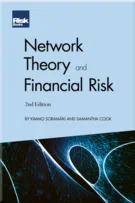A Simple Macroprudential Liquidity Buffer
Daniel C Hardy and Philipp Hochreiter
Introduction to ‘Liquidity Risk Management and Supervision’
Liquidity Regulation, the 2007-9 Crisis and the Regulatory Response
Sources of Liquidity Risk: Theory and Empirical Evidence
The Process of Liquidity Supervision
How to Implement ILAAP: Lessons Learned at Rabobank
Liquidity Risk Management Strategy and Tolerance
Liquidity Buffer Management and Banks’ Counterbalancing Capacity
Bank-Level Liquidity Stress-Testing
Contingency Funding Plans
Liquidity Transfer Pricing
Intraday Liquidity Risk Management
Putting Liquidity Risk Management into a Wider Context
Macroprudential Liquidity Stress Tests
A Simple Macroprudential Liquidity Buffer
A banking crisis and, in particular, a systemic crisis, often involves, and is aggravated by, strains in funding markets. Even a bank that is not initially short of capital can make large losses and thus become undercapitalised if it has to sell assets in a “fire sale” to meet short-term obligations or pay very high rates for funding or suffers quantitative rationing. Some banking crises may consist almost entirely of an intensification of credit risk in the loan book of individual banks, but such crises may be characterised by the relative weakness of systemic feedback loops, at least among financial institutions. Liquidity strains, in contrast, are inherently systemic: one agent’s liquid asset is another agent’s liquid liability, and what is liquid is defined in terms of what can be disposed of in the market rapidly and without major price changes, that is, in terms of its properties within the financial system. Hence, as part of efforts to strengthen macroprudential oversight, it is worth considering what instruments might be used to sustain system-wide liquidity in case of strain, and to reduce the likelihood of such strain occurring. In this chapter we present one such
Copyright Infopro Digital Limited. All rights reserved.
As outlined in our terms and conditions, https://www.infopro-digital.com/terms-and-conditions/subscriptions/ (point 2.4), printing is limited to a single copy.
If you would like to purchase additional rights please email info@risk.net
Copyright Infopro Digital Limited. All rights reserved.
You may share this content using our article tools. As outlined in our terms and conditions, https://www.infopro-digital.com/terms-and-conditions/subscriptions/ (clause 2.4), an Authorised User may only make one copy of the materials for their own personal use. You must also comply with the restrictions in clause 2.5.
If you would like to purchase additional rights please email info@risk.net









